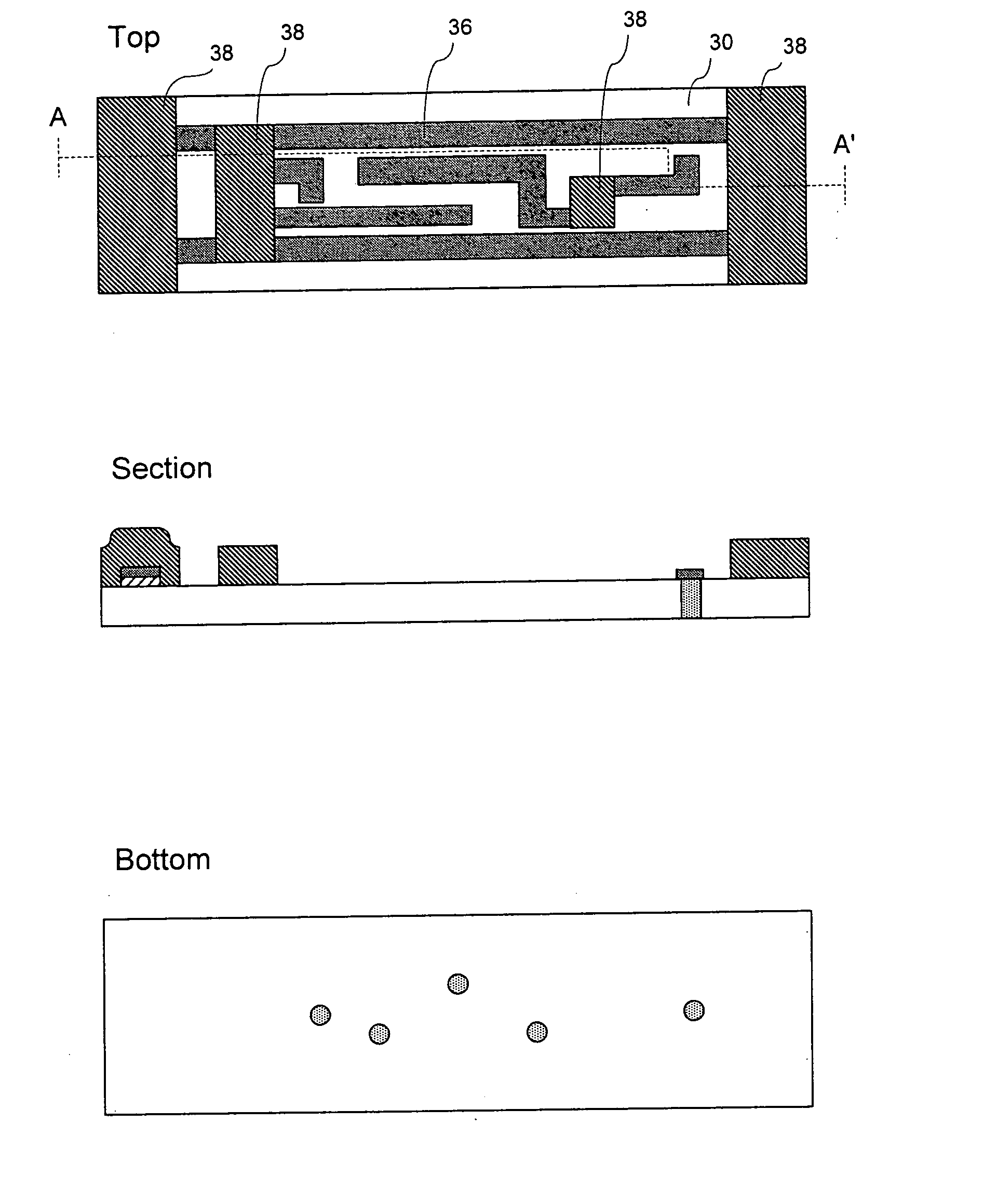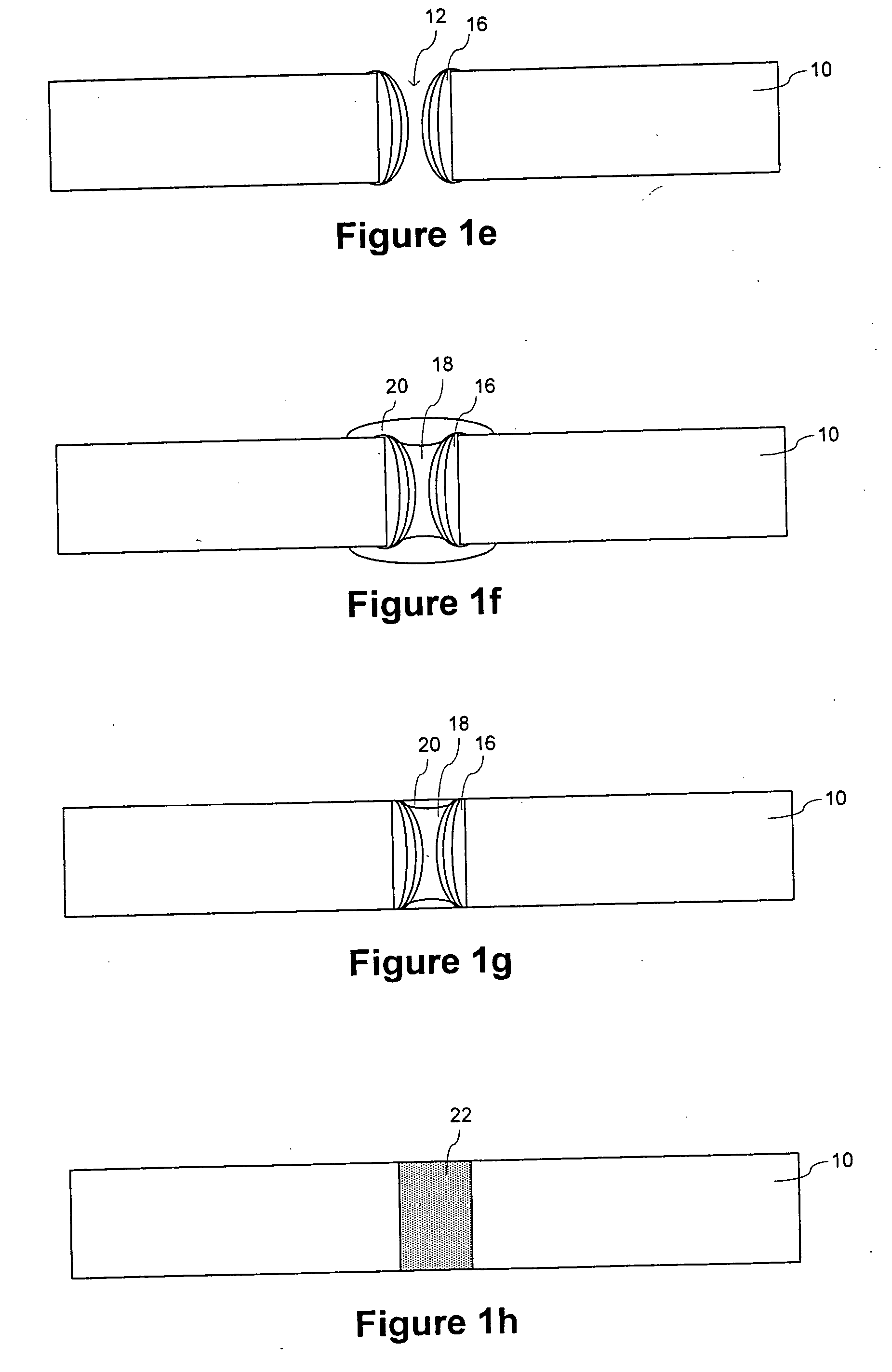High reliability multlayer circuit substrates and methods for their formation
a multi-layer circuit and substrate technology, applied in the field of multi-layer wiring substrate formation, can solve the problems of limiting the usefulness of multi-layer substrate production, complex hybrid circuits typically require equally complex interconnection structures, and the use of refractory substrates in high-temperature processing
- Summary
- Abstract
- Description
- Claims
- Application Information
AI Technical Summary
Problems solved by technology
Method used
Image
Examples
Embodiment Construction
Minimum line width 0.005 inches 0.001 inches Minimum dielectric thickness 0.006 inches 0.00004 inches Minimum via diameter 0.005 inches 0.002 inches Minimum via spacing 0.015 inches 0.006 inches Shrinkage in excess of 10% none
[0053] While the multilayer substrate of the preferred embodiment is comprised solely of vias, conductors and dielectric layers, alternative embodiments may integrate or embed passive components such as capacitors, resistors and inductors into the multilayer substrate. For example, while the circuit of the preferred embodiment comprises a discrete capacitor, in alternative embodiments a capacitor may be integrally formed in the multilayer substrate from conductors separated by a deposited dielectric layer. Capacitors may be formed, for example, using a silicon oxide or silicon nitride dielectric layer between conductive plates. Interdigitated capacitors and trench may also be formed. The degree of material control and geometrical precision provided by vacuum de...
PUM
 Login to View More
Login to View More Abstract
Description
Claims
Application Information
 Login to View More
Login to View More - R&D
- Intellectual Property
- Life Sciences
- Materials
- Tech Scout
- Unparalleled Data Quality
- Higher Quality Content
- 60% Fewer Hallucinations
Browse by: Latest US Patents, China's latest patents, Technical Efficacy Thesaurus, Application Domain, Technology Topic, Popular Technical Reports.
© 2025 PatSnap. All rights reserved.Legal|Privacy policy|Modern Slavery Act Transparency Statement|Sitemap|About US| Contact US: help@patsnap.com



